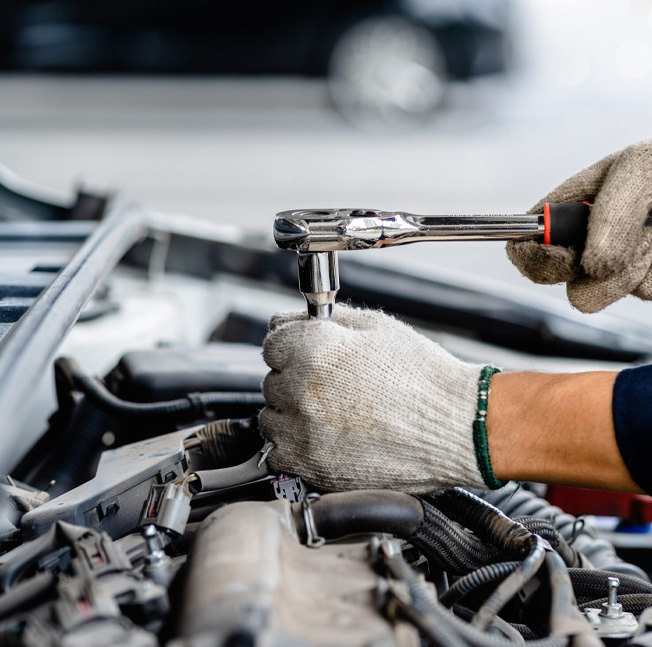10 月 . 22, 2024 09:19 Back to list
Hydraulic Ram Sealing Solutions for Enhanced Performance and Reliability in Machinery
Understanding Hydraulic Ram Wiper Seals Functionality, Design, and Importance
Hydraulic systems are integral to countless applications, including construction machinery, agricultural equipment, and material handling systems. These systems rely on the efficient movement of hydraulic fluids to actuate various mechanical components. One critical component that ensures the smooth operation of hydraulic cylinders, particularly those used in harsh environments, is the hydraulic ram wiper seal.
What is a Hydraulic Ram Wiper Seal?
A hydraulic ram wiper seal, often simply referred to as a wiper seal, is a type of seal positioned at the outermost part of a hydraulic cylinder. Its primary role is to prevent contaminants, such as dirt, dust, and moisture, from entering the hydraulic system while allowing the hydraulic rod to extend and retract smoothly. This functionality extends the lifespan of the hydraulic components and maintains optimal performance.
How Does it Work?
When a hydraulic cylinder operates, the rod extends and retracts through the cylinder bore. During this movement, there is a risk of external pollutants being introduced into the hydraulic fluid—these can cause wear, corrosion, and ultimately failure of the hydraulic system. The wiper seal acts as a barrier it's designed to wipe away any contaminants present on the rod as it exits the cylinder. This functionality is crucial, especially in demanding environments such as construction sites or agricultural fields, where exposure to particulate matter is high.
The design of wiper seals typically incorporates a flexible lip that hugs the rod as it moves. This lip creates a tight seal, ensuring minimal fluid leakage while also effectively sweeping away contaminants. Some wiper seals may also feature additional features like drainage grooves to carry away trapped fluids, thus enhancing their performance.
Types of Wiper Seals
Wiper seals come in various designs and materials to suit different hydraulic applications and environments. Common materials used include nitrile rubber, polyurethane, and fluoropolymer; each material offers unique advantages regarding temperature resistance, abrasion resistance, and chemical compatibility.
hydraulic ram wiper seal

1. Standard Wiper Seals These are basic seals designed for general-purpose applications. They offer a good balance between cost and performance.
2. Heavy-Duty Wiper Seals Designed for operations in extreme conditions, these seals are made from robust materials that resist abrasion and damage from harsh chemicals.
3. Hybrid Wiper Seals Incorporating multiple materials, hybrid wiper seals aim to combine the advantages of different seal designs, such as improved flexibility and wear resistance.
Importance of Hydraulic Ram Wiper Seals
Neglecting the condition of wiper seals can lead to severe consequences for hydraulic systems. If wiper seals wear out or fail, contaminants can enter the hydraulic cylinder, leading to increased downtime, costly repairs, and potential catastrophic failures.
Regular inspection and maintenance of wiper seals are crucial practices for operators. Signs of wear or damage include fraying, cracking, or hardening of the seal material. By replacing the seals at suggested intervals or upon inspection, operators can significantly enhance the longevity and efficiency of their hydraulic systems.
Moreover, investing in high-quality wiper seals can result in considerable savings over time. The cost of replacing a hydraulic cylinder or repairing a hydraulic system far exceeds the cost of a set of wiper seals. Additionally, maintaining a clean hydraulic environment can improve overall system performance, resulting in better productivity and reduced operational costs.
Conclusion
Hydraulic ram wiper seals play a vital role in ensuring the reliability and longevity of hydraulic systems. Their design and functionality in preventing contaminants from entering hydraulic cylinders cannot be overstated. By understanding the different types of wiper seals available and their specific applications, operators can make informed decisions that will safeguard their machinery and lead to more efficient operations. Regular maintenance and timely replacement of these seals are essential practices that will pay dividends in improved performance and reduced repair costs. As technology evolves, so do the materials and designs of wiper seals, providing even better solutions for modern hydraulic systems.
-
The Power of Advanced Sealing: High-Pressure Solutions for Modern Machinery
NewsOct.29,2024
-
Optimizing Machinery with High-Performance Oil Seals
NewsOct.29,2024
-
Maximizing Machinery Efficiency with Advanced Oil Seals
NewsOct.29,2024
-
Ensuring Equipment Longevity with Quality Oil Seals
NewsOct.29,2024
-
Enhance Equipment Performance with Quality Oil Seals
NewsOct.29,2024
-
Custom Oil Seals for Specialized Machinery Needs
NewsOct.29,2024
-
The Role of Wiper Seals in Dust Sealing and Oil Protection
NewsOct.20,2024
Products categories
















